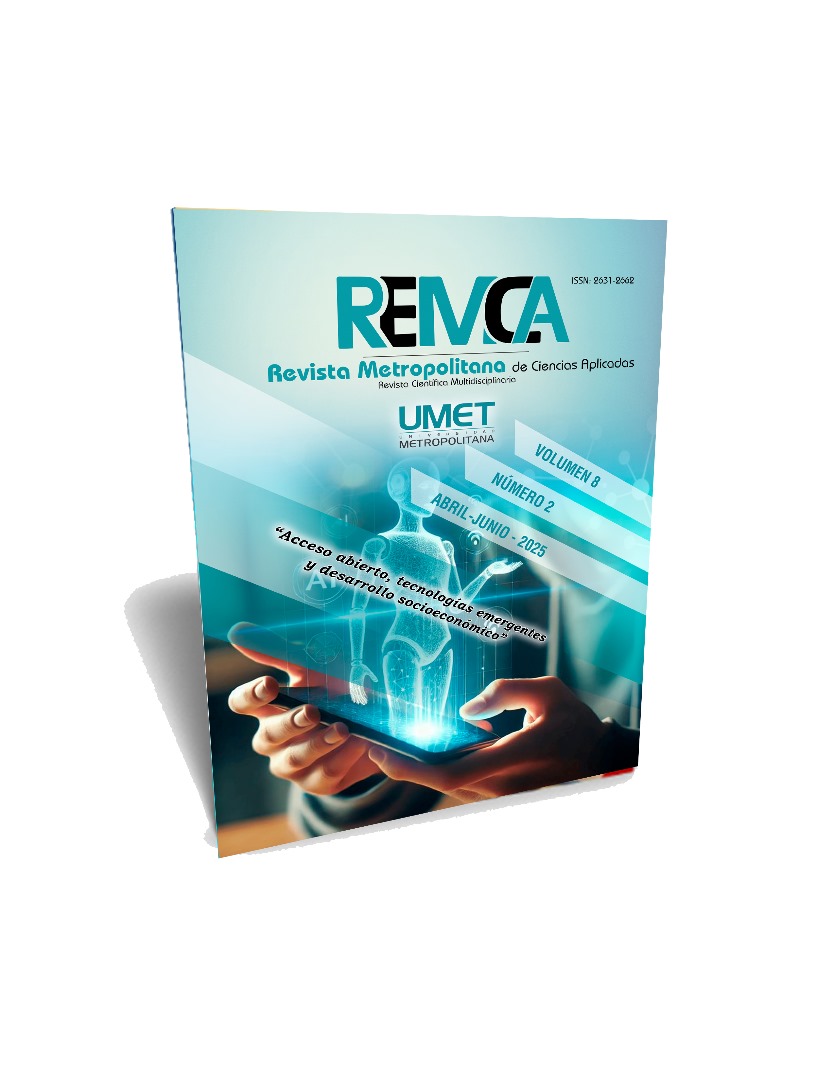Critical analysis of urban evolution in Quevedo, Ecuador from the perspective of architecture and territorial development
DOI:
https://doi.org/10.62452/j8616618Keywords:
Territorial development, sustainable urbanism, bioclimatic architecture, participatory planningAbstract
Quevedo, located in the province of Los Ríos, Ecuador, has experienced accelerated urban growth in recent decades, driven by its role as a commercial and agro-industrial hub. This study critically analyzes its urban evolution from an architectural and territorial perspective, using a mixed methodology that combines documentary analysis, GIS mapping and interviews with key stakeholders. The results reveal a radial growth with high density in the center and a disorderly expansion in the periphery, where 60% of the land is residential and the industrial zones are concentrated on the road to Guayaquil. There is a lack of land use planning, socio-spatial segregation, and environmental vulnerability, with 15% of the urban area exposed to flooding. In addition, there is a deficit of public spaces (less than 5% of the urban area) and insufficient mobility, with high travel times and vehicular congestion. The study proposes strategies for balanced development, such as updating the Development and Land Use Plan (PDOT) with a resilient approach, promoting bioclimatic architecture, and implementing sustainable transportation systems. The need to integrate community participation in urban planning to ensure contextualized solutions is highlighted. The findings underscore the urgency of comprehensive policies that harmonize economic growth with environmental sustainability.
Downloads
References
Acosta, P. (2023). Urbanismo sostenible en Latinoamérica. Editorial FLACSO.
Boisier, S. (2001). Desarrollo territorial y descentralización. CEPAL. https://www.flacsoandes.edu.ec/sites/default/files/agora/files/1245798293.boisier__descentralizacion_0.pdf
Carrión, F., & Herrera, M. (2022). Resiliencia urbana en ciudades costeras. Revista Urbano, 25(44), 45-60.
Comisión Económica para América Latina y el Caribe. (2024). Informe sobre desarrollo urbano en América Latina. CEPAL. https://repositorio.cepal.org/server/api/core/bitstreams/cfff9f43-7934-415b-b878-ee96be497fcc/content
Ecuador. Instituto Nacional de Estadística y Censos. (2023). Censo de Población y Vivienda. INEC. https://www.censoecuador.gob.ec/wp-content/uploads/2023/10/Presentacio%CC%81n_Nacional_1%C2%B0entrega-4.pdf
GAD Municipal de Quevedo. (2020). Plan de Desarrollo y Ordenamiento Territorial.
González, L. (2021). Arquitectura bioclimática en climas tropicales. Journal of Sustainable Architecture, 12(3), 78-92.
López, R. (2019). Movilidad sostenible en ciudades intermedias. Transportation Research, 15(2), 112-125.
Martínez, E. (2020). Segregación urbana y desigualdad. Revista de Geografía, 18(1), 33-50.
Orellana, A. (2021). Impacto de la agroindustria en el urbanismo. Journal of Urban Economics, 29(4), 200-215.
Organización de las Naciones Unidas. (2022). Reporte Mundial de las Ciudades 2022. https://unhabitat.org/sites/default/files/2022/06/wcr_2022.pdf
Paredes, J. (2022). SIG aplicado a la planificación urbana. Geospatial Analysis, 10(1), 55-70.
Ramírez, C. (2023). Participación comunitaria en PDOT. Planning Review, 41(3), 88-102.
Sánchez, M. (2021). Inundaciones y urbanismo en Ecuador. Environmental Hazards, 19(2), 134-148.
Torres, D. (2020). Crecimiento radial en ciudades pequeñas. Urban Studies, 37(5), 76-89.
Downloads
Published
Issue
Section
License
Copyright (c) 2025 Byron Oviedo-Bayas, Miguel Pérez-Guerrero, Luis Antonio Barreriro-García, Glenn Vinueza-Mendoza (Autor/a)

This work is licensed under a Creative Commons Attribution-NonCommercial-ShareAlike 4.0 International License.
Authors who publish in Revista Metropolitana de Ciencias Aplicadas (REMCA), agree to the following terms:
1. Copyright
Authors retain unrestricted copyright to their work. Authors grant the journal the right of first publication. To this end, they assign the journal non-exclusive exploitation rights (reproduction, distribution, public communication, and transformation). Authors may enter into additional agreements for the non-exclusive distribution of the version of the work published in the journal, provided that acknowledgment of its initial publication in this journal is given.
© The authors.
2. License
The articles are published in the journal under the Creative Commons Attribution-NonCommercial-ShareAlike 4.0 International License (CC BY-NC-SA 4.0). The terms can be found at: https://creativecommons.org/licenses/by-nc-sa/4.0/deed.en
This license allows:
- Sharing: Copying and redistributing the material in any medium or format.
- Adapting: Remixing, transforming, and building upon the material.
Under the following terms:
- Attribution: You must give appropriate credit, provide a link to the license, and indicate if any changes were made. You may do this in any reasonable manner, but not in any way that suggests the licensor endorses or sponsors your use.
- NonCommercial: You may not use the material for commercial purposes.
- ShareAlike: If you remix, transform, or build upon the material, you must distribute your creation under the same license as the original work.
There are no additional restrictions. You may not apply legal terms or technological measures that legally restrict others from doing anything the license permits.




